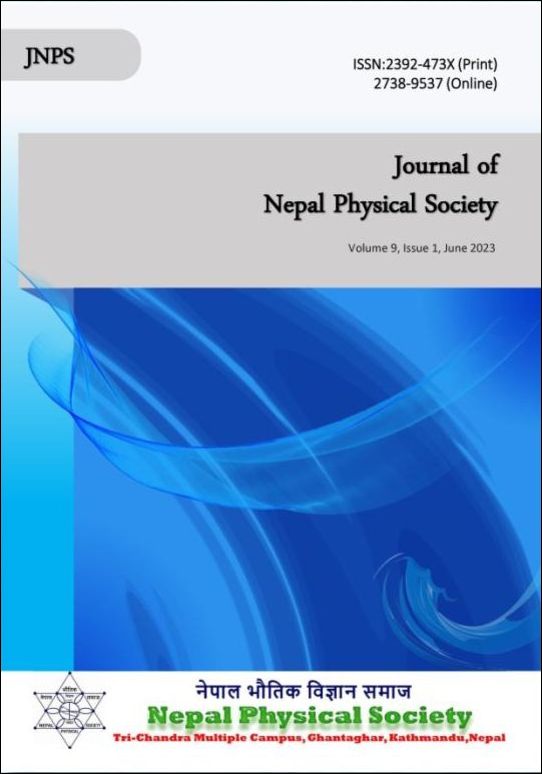Impact of Plasma Treatment on Lady’s Finger Seeds for Germination and its Growth
DOI:
https://doi.org/10.3126/jnphyssoc.v9i1.57743Keywords:
Plasma,, seed germination, Lady’s Finger seeds,, FTIR technique, argon environment,, functional groups,, transmittance,, physical growthAbstract
Atmospheric pressure plasma has emerged as a promising technology in various fields, including plasma medicine, agriculture, food safety and storage, and food manufacturing. Plasma treatment has proven to be beneficial in plasma agriculture, as it enhances seed germination, plant growth, and resilience against both abiotic and biotic stresses. Additionally, it can aid in the removal of pesticides, increase biomass, and improve yield. However, the molecular mechanisms underlying the effects of plasma treatment on seed germination and plant growth are not yet fully understood. Therefore, in this study, the authors aimed to investigate the physical and chemical properties of Lady’s finger seeds treated with cold plasma, characterized by 2.86 W dissipative power at 7 kV in an argon environment and electron density of 4.53×1010 cm–3 under atmospheric conditions. The FTIR technique was used to identify the functional groups present in the seed before and after treatment, revealing the presence of C-H, C=O, C-O, and N-O functional groups, as indicated by their corresponding absorption peaks at different wave numbers. The stretching of bonds between elements of the functional groups was observed based on transmittance. Moreover, the treated seeds were germinated, and the physical growth of different parts (root, shoot, and leaf) was measured. The results showed that the growth rate of different parts was higher in the treated seeds than in the untreated.
Downloads
Downloads
Published
How to Cite
Issue
Section
License
All right reserved. No part of this Journal may be reproduced in any form or by any electronic or mechanical means, including information storage and retrieval system, without permission in writing from the publisher, except by a reviewer who may quote brief passage in a review. The views and interpretation in this journal are those of author(s) and they are not attributable to the NPS.




